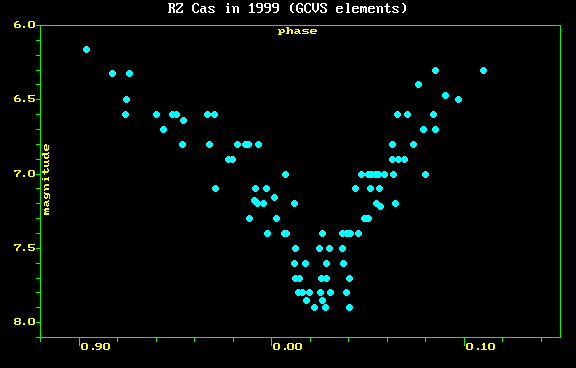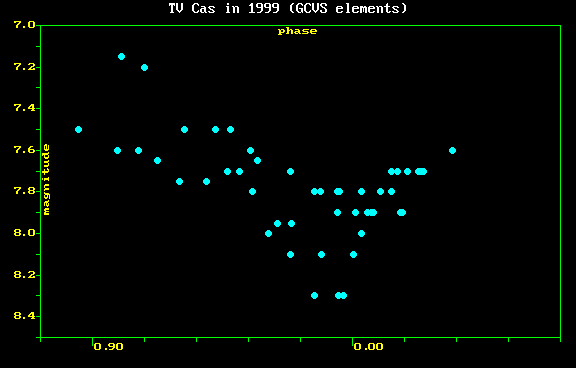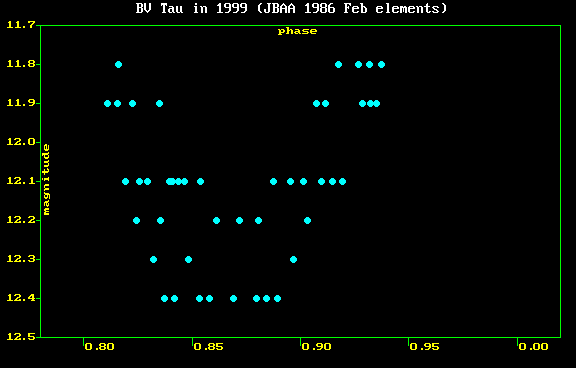
Observers : Michael Clarke, David Conner, Shelagh Godwin, Tony Markham, Melvyn Taylor.
The primary eclipse continues to be late. The discrepancy is slowly increasing.
Here are four preliminary light curves generated using the observations submitted for 1999. In each case, observations from more than one observed eclipse have been combined into a single light curve. Phases were calculated using the GCVS elements unless stated otherwise.

Observers : Michael Clarke, David Conner, Shelagh Godwin, Tony
Markham, Melvyn Taylor.
The primary eclipse continues to be late. The discrepancy is slowly
increasing.

Observers : David Conner, Ron Livesey, Tony Markham, Melvyn Taylor.
Here the primary eclipse may be slightly earlier than predicted. The scatter
is partly due to some observers seeing shallower eclipses than do others.

Observers : Matthew Barrett, Michael Clarke, Shelagh Godwin, Lindsay
Green, Eric Horsley, Simon Jenner, Tony Markham, Robert Naudziunas,
Melvyn Taylor.
The primary eclipse is at predicted phase approx 0.33, with the
secondary eclipse approx half a cycle later. The latest elements
issued by Krakow Observatory give a period which is now approx 37
minutes longer than that given in the GCVS.

Observer : David Conner.
The observations (from 3 eclipses : Nov 16, Nov 29, Dec 28) clearly
do not fit the longer period of 12.349 days given in the GCVS.
Instead, the phases in this light curve were calculated using the
ephemeris suggested by John Isles and Tristram Brelstaff in the 1986
Feb BAA Journal :
Min I = 2445053.31 + 0.93047 E
Given the short period and the fact that only 2 dp were specified originally in the ephemeris, it is not surprising that the observed and predicted minima have diverged slightly. However, by continuing to observe eclipses, we can define the elements more precisely.